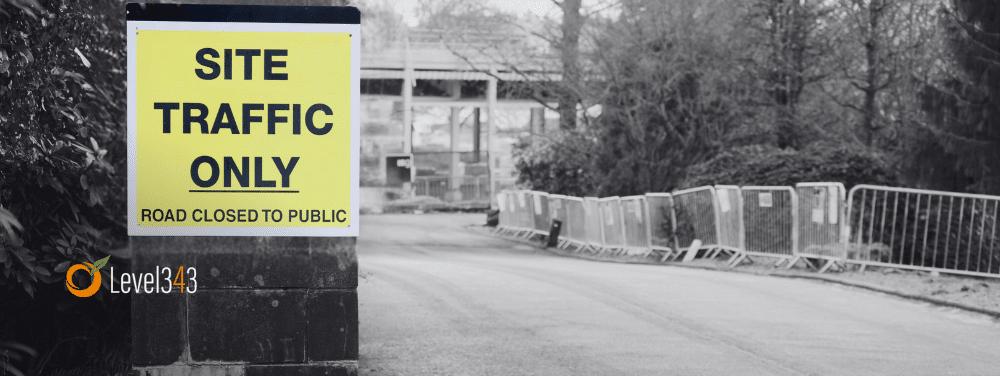Table of contents
- Mastering Web Traffic Analysis
- Why track this?
- Choose the right tools.
- Establish your site’s goals.
- Decipher your KPIs.
- Identify additional metrics to track.
- Keep track of the most successful areas of your website.
- Monitor traffic sources.
- Understand unique visitors vs. number of visits.
- Pay attention to bounce rate.
- Measure conversion rate.
- Understand how long users stay on your website.
- What are your aspirations?
- See improved business performance.
As an entrepreneur, you want your website to get the attention it deserves. Effective site traffic measurement is crucial to meet this goal. But few business owners understand how to measure site traffic effectively. It’s not just counting the number of visitors; it’s about gaining actionable insights to turn visitors into loyal customers.
Mastering Web Traffic Analysis
Just how effectively is your website working? Shockingly, numerous businesses struggle to provide an answer to this straightforward question, primarily because many neglect to monitor their site’s activity.
Why track this?
Measurement is key to moving beyond speculation. Without concrete data, you’re left unaware of your website’s performance – good or bad. You’re left in the dark about what content is resonating with your audience, and missing insights into what pages are generating the most traffic.
Analytics and metrics may seem intimidating, but rest assured, gauging your website’s effectiveness doesn’t require a PhD in data science. The essential task here is understanding what you’re measuring, why it matters, and how you can use these insights to optimize your website.
Choosing the correct key performance indicators (KPIs), accurately reading your awareness and engagement metrics, and turning the data into user friendly marketing fuel, are how small businesses learn to compete with big business.
Choose the right tools.
GA4, or Google Analytics 4, is an invaluable free tool for quantifying website traffic and serves as a great starting point for assessing your site’s performance. Simply add the GA4 code to your website to initiate tracking. It furnishes almost all relevant data you need and allows you to set up custom reports.
Paid alternatives include Kissmetrics, Hubspot, and Crazy Egg—engagement analytics tools that measure user behavior on your site.
Establish your site’s goals.
Without a clear objective, how can you know what to measure? Before diving into metrics, you need to clearly define your website’s goal. While the ultimate goal for most businesses is to boost revenue, other meaningful engagement steps like email subscriptions, content downloads, and live chat interactions also merit tracking.
Each time you create a campaign, you want to do the same thing and clearly define the goals of that campaign. They aren’t always going to be the same. For example, the KPIs for Google Ads shouldn’t be the same as the KPIs for social marketing.
Decipher your KPIs.
Navigating through marketing lingo, it’s critical to understand KPIs. Essentially, you must identify metrics that align with your business goals. With a plethora of reports offered by modern analytics tools, it can be easy to lose focus.
So what do we mean by KPIs?
For example, conversion rates gauge your website’s capability of converting visitors into leads. A high conversion rate signifies an optimally-performing website. Therefore, if lead generation is your website or campaign’s goal, your conversion rate should be a KEY indicator on how well your activities are doing.
Identify additional metrics to track.
While having specific goals and KPIs is vital, there are other critical metrics to measure that contribute to achieving your objectives:
- Visits – Total count of your website’s visitors in a given period, including multiple visits from a single user.
- Unique Visitors – Captures an individual who visits your website during a specific period. A repeat visitor is counted as one unique visitor.
- Page Views – Counts how frequently a particular webpage is viewed
- Pages/Visit – Provides the average number of pages viewed per visit.
- Traffic Sources – Indicates where the traffic originates- whether direct, referral, or organic. This helps track the effectiveness of your online advertising strategies, the best social media channels to promote your brand, and whether your SEO efforts are bearing fruit.
- Bounce Rate – Indicates the percentage of visitors who leave after viewing only one page. Aim to keep this number as low as possible.
- Landing Pages – The entry point of your visitors to your site. The page with the highest number of entries often aligns most effectively with what visitors are looking for.
If you’re unfamiliar with measuring your website’s performance, these fundamental pointers can guide you. Gradually venture into more complex metrics to hone your insights. Make tracking website analytics a routine and tweak your site based on your findings.
Keep track of the most successful areas of your website.
Which pages or blog posts are attracting the most visitors? Which ones are creating the most engagement or conversions? These are the areas of your website you will want to examine closer and consider using as templates for future content.
Monitor traffic sources.
Measuring where your website traffic is coming from is vital in understanding the success of your digital marketing strategies. Be it through search engine results, direct traffic or referral traffic from social media platforms or other websites, knowing your top traffic sources can help you target your marketing efforts more effectively.
Understand unique visitors vs. number of visits.
“Unique visitors” refers to the number of individual users who visit your website during a specific period of time, regardless of how many times they visit. This is an important metric, as having a high number of unique visitors could mean your brand is reaching a good amount of people. However, a high number of visits from the same users could mean they find your content or products on your site valuable.
Pay attention to bounce rate.
The bounce rate is the percentage of users who land on your website and decide to leave without going to a second page. A high bounce rate usually means that your landing page is not relevant to what they are looking for or your site experience is poor. It’s important to examine why users are leaving your website after visiting only a single page.
Measure conversion rate.
As mentioned, your website’s conversion rate is the percentage of visitors who take the desired action, be it making a purchase, subscribing to a newsletter, or downloading a piece of content. A higher conversion rate means your website is successfully encouraging visitors to take these actions, which often ties directly into the goals of your business.
Understand how long users stay on your website.
The amount of time users spend on your website or a specific web page, is another important metric to measure. It can provide insights about how effectively your content is engaging visitors.
What are your aspirations?
For marketing executives and consultants, the key aspirations include boosting web traffic rapidly, understanding visitors’ behavior, comprehensively benchmarking site performance, improving customer experience, and outperforming competitors.
Perhaps the most challenging aspect is understanding and effectively analyzing the site traffic data. Many entrepreneurs struggle due to limited knowledge of the tools needed or of the indicators that truly matter.
Conquer the challenge with these tips:
Set up conversion tracking.
This tool measures the effectiveness of your site at making visitors take desired actions, such as signing up for newsletters or making a purchase.
Example: On an e-commerce site, set a “Thank You” page appearing post-purchase as a conversion in Google Analytics. By measuring conversions, know which marketing efforts are paying off.
Understand your audience.
Use tracking tools to get insights about your audience’s behavior, interests, location, and demographics.
Example: By tracking form submissions, you can identify high-performing landing pages and effectively target prospects to boost conversion rates.
Measure site speed.
A slow website can turn visitors away. Tools like GTmetrix or Google’s PageSpeed Insights can pinpoint issues affecting site speed.
Example: A website taking more than 3 seconds to load may be losing visitors before they even land on the page. By analyzing loading time and making necessary improvements, you can significantly improve the user experience.
Monitor SEO performance.
SEO tools such as SEMRush or Google’s Search Console can show how visible you are on search engines and which keywords are driving traffic.
Example: If your top-performing blog post ranks high for a specific keyword, optimize the post or write similar content to target that keyword more aggressively.
See improved business performance.
In conclusion, effectively measuring your site’s traffic and strategically utilizing these insights can vastly improve your business performance. Key data such as pages on your website receiving the most traffic, keyword rankings, and search terms used by potential customers can inform and shape successful marketing campaigns.
Understanding where and how customers interact with your online stores, whether via mobile device or otherwise, can enhance the user experience and drive greater traffic. This in turn encourages good conversion rates and the gathering of valuable email addresses for continued customer engagement. Finally, knowledge of what products or services are generating the most interest and sales ultimately drives revenue growth for your business.
By measuring your site’s traffic, you will gain deep insights into your visitors, their preferences, the effectiveness of your content, and how they interact with your site. These invaluable insights will empower you to improve your site strategically, enhance user experience, and drive more traffic, thereby leading to a spike in conversions and ultimately, revenue growth.



































